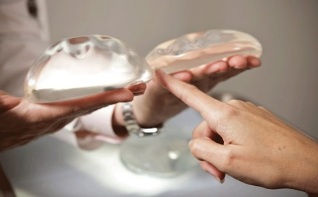Breast augmentation is one of the most popular plastic surgeries in terms of mammoplasty. Augmentation mammoplasty is a complete surgical procedure. Breast augmentation surgery is performed under general anesthesia and requires careful preparation of the patient, as well as his stay in the clinic (the period varies depending on the complexity of the surgical intervention and the patient's condition). Currently, various methods of breast augmentation using different implants have been successfully developed and practiced. Indications for surgery are primary aplasia (absence of mammary glands), primary hypoplasia (underdevelopment of mammary glands), mammary gland rupture, mastectomy (surgical removal of glands, complete and partial).
From the history of mammoplasty augmentation
The need for breast augmentation surgeries was dictated by diseases that required removal of breast tissue, or led to deformity, asymmetry of the mammary glands in women. The first attempt at breast augmentation was made in 1889. Liquid paraffin was used as an implant, which was injected into the mammary gland. In 1895, the first augmentation surgery was performed using the patient's own tissue (in this case, a lipoma that was removed from the patient's thigh). The unsatisfactory results of the operations performed prompted a further search for alternative materials. So throughout history, doctors have used glass balls, foam, sponges, polyurethane, ivory and many other materials. The introduction of such materials led to the development of inflammatory processes in the mammary gland tissues, infections, tissue necrosis and rejection of implanted materials.
Only in the sixties of the last century, for the first time in medical practice for breast augmentation, silicone implants were used, which are the prototypes of those breast implants used in modern plastic surgery. The shell of the first implants allowed the filler molecules to pass, which led to the development of aseptic inflammation in patients, and the smooth surface of the implant led to the development of capsular contraction.
In the eighties, scientists hypothesized that used silicone breast implants provoke the development of breast cancer. The Food and Drug Administration (FDA) has conducted numerous studies without finding confirmation or refutation of this hypothesis. Modern breast implants are completely safe for patients' health, and innovative technologies allow you to create natural relief, shape and tactile sensations when touching an enlarged breast.
Breast augmentation methods. Non-surgical techniques. Implants
There are two main methods of breast augmentation: surgery and non-surgical practices.
Surgical methods of breast augmentation vary in the type of access to the breast:
- Folding tissue distribution(in the natural curvature line), which is more convenient for the surgeon, providing greater access to the tissue, and is preferable topatients, as the scar will be hidden in the sheep;
- Distribution of tissue around the areola.The scar is assumed to be less visible in the areola area, however, this technique implies the risk of damaging and scratching the milk ducts, which will interferein natural lactation during breastfeeding;
- Axillary approach- tissue dissection in the patient's armpit, is the most dangerous method of breast augmentation. The main advantage of the technique is the complete absence of lesions in the mammary glands.

According to the implant placement method, a distinction is made between placing the implants directly under the breast and under the pectoralis muscle. Recently, plastic surgeons have talked about another technique for placing the breast implant under the fascia of the pectoralis muscle, which is actually a placement under the breast.
Non-surgical breast augmentation techniques include exercise complexes, dietary supplements, hormonal medications (light breast augmentation is one of the side effects of some groups of medications). It should be noted that physical exercise is ineffective as it involves sector muscles. The mammary gland itself does not contain muscle tissue. Dietary supplements and hormonal medications provide only temporary temporary breast enlargement.
Modern implants are distinguished by their shape (round, teardrop-shaped), surface structure (smooth texture and stripes), as well as filling (salt, gel, hydrogel). The shape and size of the implants are selected individually, based on the natural relief of the patient's breast.
Rehabilitation period after breast augmentation
Rehabilitation period after breast augmentation surgery is characterized by swelling, painful sensations, bruising. For the first 14 days after surgery, patients are shown complete rest. During the first month, a specially selected compressed garment should be worn. In the first three months after breast augmentation, patients should avoid physical activity, visit the pool, sauna. The final result after breast augmentation surgery can be evaluated only after 9-12 months.
Breast augmentation: feedback on surgery
Before deciding on a breast augmentation surgery, the reviews of which are highly controversial, the patient should understand that mammoplasty is a complete operation, not a cosmetic procedure that involves certain health risks. To avoid the negative consequences of surgery, patients are strongly advised to study existing breast augmentation surgery methods, the types of implants available, and also to visit the consultations of some plastic surgeons. Breast augmentation, reviews of which are available on the global network, requires considerable experience of a plastic surgeon in this particular area. The mistake of a surgeon can lead to undesirable consequences in the form of asymmetry, different sizes, visible wounds, as well as the development of capsular contraction, inflammation, implant rejection and damage during surgery.
Breast augmentation before and after
Many plastic surgeons offer patients to explore the portfolio, which contains a surgeon's work in breast augmentation before and after. This visual demonstration of the results allows patients to assess the real possibilities of surgery. The portfolio shows pictures of patients and breast augmentation results before and after from different angles. Computer modeling allows the desired dimensions to be applied to the patient's true physical image.


























